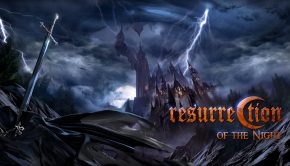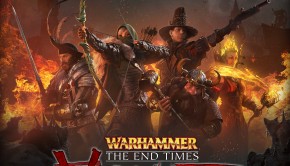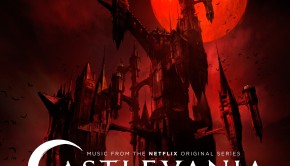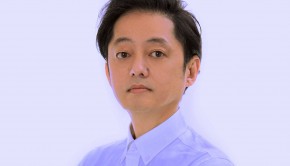Castlevania -Lords of Shadow 2- Original Game Soundtrack
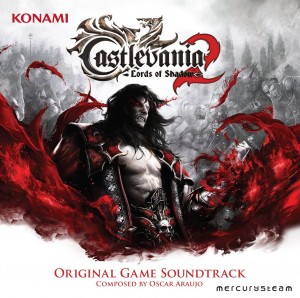 |
Album Title: Castlevania: Lords of Shadow 2 Original Game Soundtrack |
| Record Label: Sumthing Else Music Works |
|
| Catalog No.: SE-3058-2 |
|
| Release Date: Feb 25, 2014 |
|
| Purchase: Download at Sumthing Else |
Overview
The sequel game Castlevania: Lords of Shadow 2, developed by Mercury Steam and published by Konami, was met with mixed-to-positive reviews mostly due to the inconsistency of the game; while the combat system was highly rated, the visual design and setting of the game was met with a little more uncertainty, in contrast to the first game’s highly positive reviews. The score was written by returning composer Oscar Araujo, and performed by a number of different orchestras from The Slovak National Symphony Orchestra to Master Symphony Orchestra Valencia, to an instrumentally rich and powerful effect.
Body
I will be the first to admit that the older Castlevania themes – the dramatic, synthesized, over-the-top scores from games like Lament of Innocence and Symphony of the Night – were what drew me into the series, and their loss in scores like this one is evident. The new style of the Castlevania genre, the dark, brooding, heavily orchestral scores, perhaps suffers as a result of this loss, and for those veterans of Castlevania, it may be best to approach this score as one from a different game series. It’s nothing like the original scores, but neither is it lacking in quality. The music only really began to draw me in after I started hearing it like a separate symphonic work to a new game instead of the continuation of a popular and memorable series that had already carved its niche in game music.
Several themes permeate the score. The opening track, “The Throne Room,” features one such theme, a simple three-note sequence, moving stepwise across the scale – upwards the first half of the track, and downwards for a variation about halfway through. The piece could be divided in half, not just because of the direction of the two realizations of the one theme, but because of the mood. The first part of “The Throne Room,” moves upwards, albeit ambiguously so, either beginning a minor scale or concluding a major one. The mood of this half is still and hypnotizing, not quite tranquil, minimizing the role of any instruments that may get in the way of the soft melody, and the overall effect is hopeful and uncertain, until the second half, when the harmonizing instruments intensify and a more resolute rhythm picks up. At this point, the melody takes the first note of the rising theme but falls downwards instead; the juxtaposition of the melodic and harmonic lines are interesting, as they seem to contrast moods. The harmony is bright and restless, whereas the melody is more somber, almost mournful. Araujo inserts more variations before the piece ends, including a five-note rising pattern, and an arrhythmic version of each of the melodies.
“The Toy Maker” was the next track on the score that caught my attention; amid a rapid and unwavering percussive backdrop, the countermelody of a chorus and high strings offset the low brass until they begin a new pattern of their own, atonal and wild. After a brief pause, the strings return, a few octaves lower, and the choir and brass enter as well. I love the chorus in this part – they provide consistency in a piece that is otherwise chaotic, and the melody from the opening theme returns in a quietly triumphant low brass entrance. Each section in this piece – strings, brass, and choir – seems to evolve as the piece continues, so that the end of the piece boasts considerable more depth than the beginning. The following track, “Paladin of God,” takes the same elements of that depth and exploits them; the chorus opens the piece dramatically, and everything that ensues is dark, heavy, and dramatic, but without that satisfying dimension that I loved about “The Toy Maker.”
“Descent to the Castle Dungeons” is a beautiful track, parts of it reminding me of elements from different film scores and composers, from Howard Shore to Hans Zimmer’s Superman. Araujo carefully includes delicate solo instruments and soli moments from various sections of the orchestra, ensuring that the listener understands just how organic this orchestra is. He certainly has a talent for utilizing each section to its fullest potential. The piece opens on low and high strings and a rich alto solo, shimmery with vibrato and quickly overpowered by the full orchestra entering in unison. The melody returns again at the first pause in the orchestra, and they alternate melodic questions and answers, sometimes resounding, sometimes uncertain, and generally melancholy. As the piece is closing, a rich and warm burst of notes from the French horns give the piece one more jolt of energy, and a descending ostinato from the trumpets end the piece on a resounding note.
So, to the heart of the album – “Dracula’s Theme.” Once the theme is first introduced, it makes its appearance several times in the album before the end. Like the opening/main theme, it is simple, and the first time it is introduced, it is eerily tranquil. The melody itself sounds like a warped Beethoven piano concerto, stripped down to the bare melody, played softly on a muted piano, with the lightest possible accompanying strings. The second half simply magnifies the first part, echoing the melody with a much larger choir and some innocuous harmonic filler notes, without introducing any real variation to the melody. I’m not sure which theme in Lords of Shadow 2 makes its appearance the most – many are integrated into other tracks, so a straight-up count is difficult – but for me, “Dracula’s Theme” is the most powerful in terms of its slow realization over the course of the album as well as its bare-bones content. It’s executed extremely well, and Araujo’s care to see this theme developed very meticulously, instead of simply thrown at the listener the first time it shows up, becomes more evident as the album continues.
Before Dracula makes another musical appearance, “Hunter and Prey” picks up the pace of the album with its pulsing electronics and strings, and a duet of brass and choir. The piece is reminiscent of “The Toy Maker” in its sheer energy and constant rhythm, until the following track, “God’s Chosen” which brings the album to a screeching halt with an unadorned, practically ecclesiastical, choir and a resounding bass drum that pauses the music each time it strikes. A timpani, alongside low choir and brass, follow the pauses with an almost cartoonish rhythmic air, and the piece ends more delicately, with a bass progression. Finally, “Carmilla” brings “Dracula’s Theme” back into the album, once again on soft piano, after an unsettling crescendo of atonal instruments. Once again, the melody is soft and seductive, particularly after the clamor of the last two tracks, but vanishes quickly amid more chaotic strings. “Castlevania” sports a catchy melody against a powerful bass percussion rhythm; the melody is transient, but the rhythm serves as the lasting foundation for this score, returning once against to create a driving dynamic throughout the piece.
“Camilla’s Fight” brings back one of the motifs from “God’s Chosen” in an oddly melodic setting. The choir in this track is surprisingly focused on the melody, instead of on harmonies or even rhythms, and despite the fact that it never really settles in with the rest of the orchestra, it adds splashes of color to the piece, which otherwise might have remained blended in with the rest of the score. As the piece continues, it gains breathtaking and invigorating bursts of brass that, instead of simply adding more excitement to the piece, contribute to its melodic integrity.
The softer tracks have heavy impacts on the variation in Lords of Shadow, giving the album more dimension than it would with a straight-up series of fight tracks, laced with “Dracula’s Theme,” and successfully showcasing Araujo’s compositional versatility. “City in Flames” is a string elegy that starts by dragging itself from chord to chord, and slowly builds up energy by subdividing its notes more and more, until a consistent arpeggio becomes audible in the bass, and even the upper strings catch on to a kind of melody. At no point does the piece turn into anything like its companions on the album – there is no percussion, no giant crescendo, no breaking point – but it does build its own energy from beginning to end, almost finding itself as it progresses. “A Man of God” opens with a typical drumbeat, but morphs into a choral track, a la “God’s Chosen,” and the haunting clarity of the choir, alternating with gentle horns and strings, gives the piece a richness that its predecessor lacks.
The penultimate track, “Satan,” is about as grandiose and sinister as its title suggests. Of course “Dracula’s Theme” returns in full force – from the very beginning, his theme is hinted, but quickly loses itself amid screeching strings and that bass ostinato from the end of “God’s Chosen” that brings to mind some kind of animated villain. Were it not for the strings, I would have had trouble taking this piece too seriously, but enough ornaments are added to give it a terrifying flair. The strings, combined with several simultaneous motifs all over the brass range and ominous pauses to the piece, seem to magnify the bassline, and when the theme finally shows up, it is accompanied by full choir. Hearing that simple melody in such a foreign setting gives it an added weight. It’s familiar, and has the force that the listener has been expecting from the first minute it showed up – and it works. Moreover, it develops. Araujo is not content to simply let the melody show up in the piece, but he encourages it to grow and discover new chords and new directions as “Satan” marches on ceaselessly to its finale.
Of course, the album can’t end without one more nod to the theme that has such an impact on the quality and consistency of the score; the album closes with “Carmilla’s Spell,” which opens with an ominous-but-rote combination of notes and instruments, but soon gives way to strings and piano. For a time, it’s beautiful, and sweet – and then the theme returns, still on piano and strings. After “Satan,” the listener knows just how misleading the tranquility of the theme is, and darker notes on lower strings and choir accompany the melody. After the melody is broken off by some percussive bursts, the sweetness of the higher piano and strings return, and the bright choir from “A Man of God” makes an appearance.
Summary
In my opinion, the greatest success of Araujo’s score is in creating a musical lightness and a musical darkness that clearly contrast each other, without becoming overly stereotypical. At times, he falls into that trap – I’m still ambivalent about that bass theme that shows up in a couple tracks – but for the most part, I’m impressed by how well he paints an original musical picture of such an old conflict. The score is a solidly composed and performed orchestral work, and those fans of the first Lords of Shadow score will be glad to know that Araujo continues his steady pace of musical accomplishment.
Do you agree with the review and score? Let us know in the comments below!
4
Posted on August 5, 2015 by Emily McMillan. Last modified on August 8, 2015.

